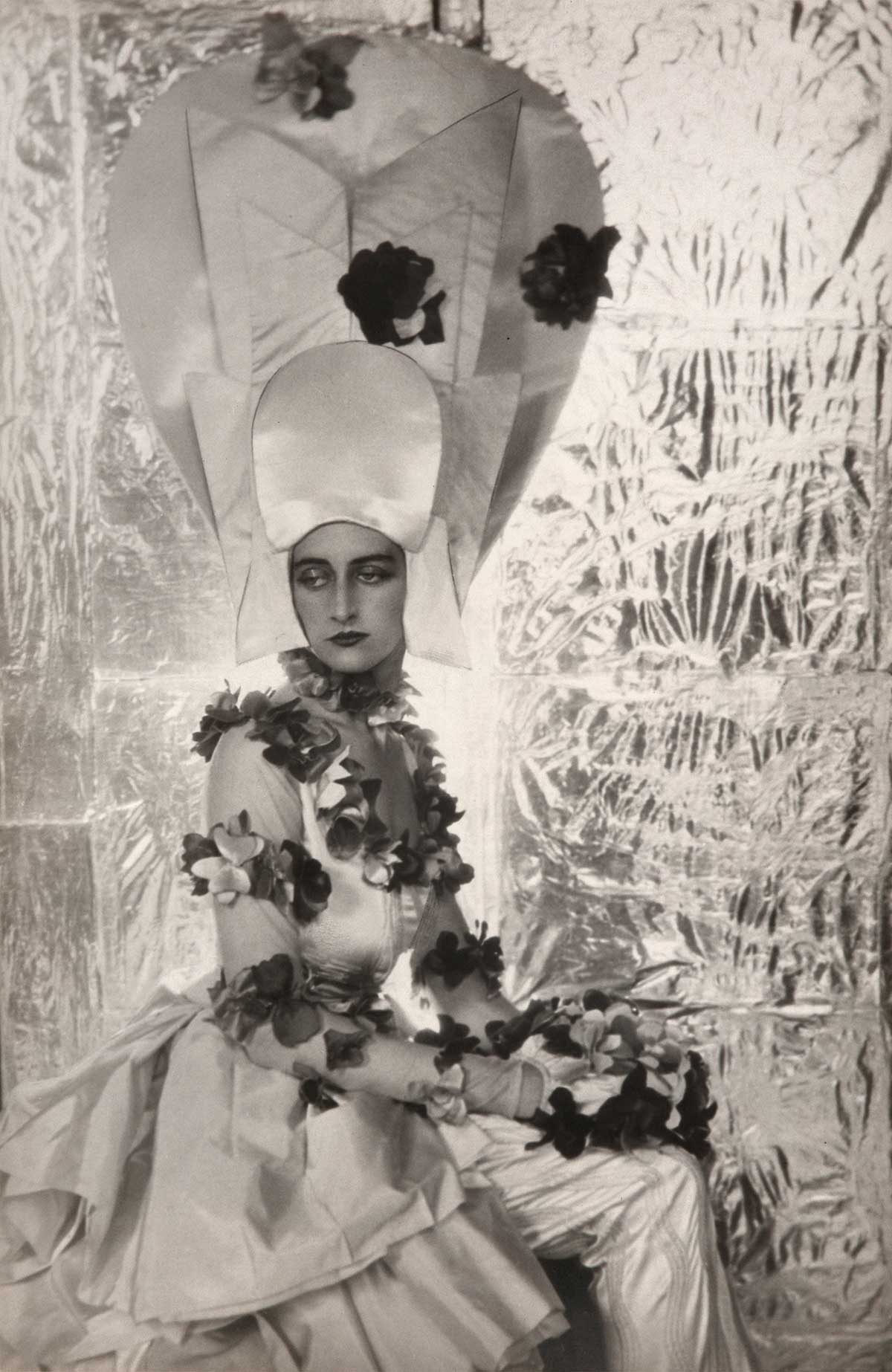Photographer, artist, designer and socialite, Cecil Beaton was born in Hampstead, London in 1904 to Ernest Beaton, a wealthy timber merchant, and his wife Etty Sissons. From an early age he was fascinated by the glamour and elegance of his mother and aunt, and fascinated by the published photographic image, particularly in the idealised images of stage stars and fashion idols such as Lily Elsie. Whilst at Harrow School, he developed a passion for both photography and social advancement which, combined with his natural talent for aesthetics, subsequently propelled him to the heights of fame.
Beaton was drawn to opulent people and precious objects, and went to great lengths to remake the world in the image of his ideal. Presenting himself as an ‘aesthete’, he explored his identity through a series of increasingly public creative activities. Having been accepted into St John’s College, Cambridge in 1922, Beaton joined the Amateur Dramatic Club and the Marlowe Society, engineering for himself a central position within both groups, and quickly gaining a reputation for his set and costume designs. It was through his designs and performances for these two groups that he got his first taste of fame, often drawing crowds from London and receiving write ups in national dailies. In 1925 Beaton left Cambridge without a degree and continued to develop his photographic practice. Throughout the 1920s his sisters, Nancy and ‘Baba’ Beaton, frequently sat for their brother. They proved useful props for the young photographer, as he experimented with backdrops, materials and photographic techniques.
It was 1926, however, that would prove an annus mirabilis for Beaton, as he entered the orbit of prominent people who responded with sympathy to his artificial aesthetic. His friend, Allanah Harper, began to introduce him to members of the fashionable set that had been lately dubbed the ‘Bright Young People,’ including Brenda Dean Paul, Eleanor Smith, and Zita and Baby Jungman. Harper also introduced him to the poet Edith Sitwell, who he would go on to photograph on numerous occasions. In what are now icons of the age, his images sanctified or even deified Sitwell, while he represented Stephen Tenant and his coterie as aristocrats of the ancien regime, recreating Watteau’s fêtes champêtres. Beaton’s sparkling photographs provide a fascinating record of this enduringly popular group. In November 1927, a year after meeting Sitwell and Tennant, Beaton held his first exhibition of photographs, drawings and theatrical designs at the Cooling Galleries, Bond Street. The range of sitters on display demonstrated how far he had come both socially and artistically, stars of the stage and of the season appearing in equal prominence. Beaton had honed his theatrical instinct into something highly sophisticated, so was able to provide a perfect balance of setting and sitter. He proved well suited to an age that often blurred the activities of high culture and high society
